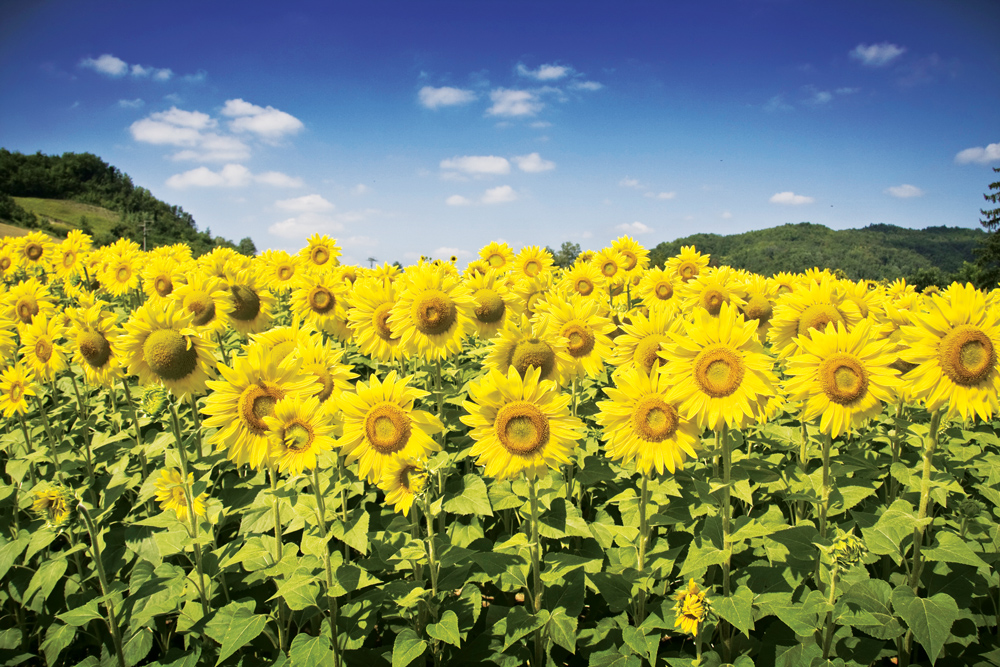April 2025
| RICHARD MCPHERSON, PULA CONTRIBUTOR |
 |
ONE OF THE WAYS TO IMPROVE YOUR YIELD AND INCOME IS TO HARVEST YOUR SUNFLOWERS AT THE RIGHT TIME AND HANDLE THEM AS BEST AS POSSIBLE. ALSO PREVENT ANY MOISTURE DAMAGE AND SEED DEGRADING TAKING PLACE BEFORE AND AFTER COMBINING.
The 2024 sunflower production season produced 635 750 tons of delivered seed from 529 000 hectares, which gives farmers a national average of 1,2 t/ha. In the month of February (3/02/25 to 26/02/25), the sunflower contracts trading on the Johannesburg Stock Exchange (JSE) had an average of R9 273,29 for March 2025, R9 129,41 for May 2025 and R9 311,82 for July 2025.
The current futures prices vary from a low of R8 800 to a high of R11 030 from March to July 2025. Look at your sales strategy to fix prices to your best advantage. This implies a gross per hectare value of R11 898 at the national production level. Then you must hope that your yields this season outperform the national average, so that you will realise a higher net margin or profit on your crop.
HARVESTING AT THE OPTIMUM TIME
In a normal year, short season hybrids will have heads that become yellow at about 105 days after planting and brown at about 120 days after planting. During this two-week period, you can assess your possible final yield per hectare. It is also a good time to arrange with the contractor for harvesting, or be sure to have your own equipment fully prepared to take off the crop at the optimum moisture content.
On-farm storage and drying facilities (if you have this available on the farm) can also be prepared. The best option for smaller farmers is to harvest and deliver the crop immediately to the co-op or private silos. This will reduce or eliminate the risks associated with drying your own crop or temporary storage on a shed floor.
Harvesting sunflowers with a high moisture content normally results in higher yields, less bird damage and less head-dropping or seed-shattering.
Farmers should invest in a moisture meter to make accurate readings in the field. Sunflowers can be combined at 20% and dried to 10%, but this is a very high starting point. Some silos will only accept them at between 12,5% to 13,5% moisture from the lands. Seed moisture levels of 12,5% or lower are more optimum to start harvesting. The losses resulting from the combining process can be very high if you wait for the seed moister to be at 10%.
Make sure that you are aware of the highest acceptable moisture content percentage for deliveries directly from the land to the co-op silos, so that a very valuable load will not be turned away. Remember that sunflowers need to be at about 9,5% for storage up to six months, and must be continuously aerated or moved from silo to silo to prevent any fungus build-up. Sunflowers over 12,5% can have a fungus build-up within 48 hours of being dumped into a pile and can start a fire spontaneously.
COMBINE SETTINGS
SAMPLE CLEANING
Seed sample cleaning is the secret to any temporary storage if your local silo is not able to take a load immediately.
DRYING CLEANED SEED
High-oil sunflower seed is made up of about 35% to 42% oil and 18% to 20% protein. The oils contain 55% to 75% linoleic and 15% to 25% oleic acids, which can be highly volatile. For farmers who have drying machines, it is essential to monitor the flow rate and temperature settings more carefully than when drying maize or wheat seed.
At even 2°C higher than the optimum, you will start to smell the oil in the air around the drier. This is the first warning that your temperature is too high or that the flow rate is too low in a continuous flow system. Batch driers must be closely monitored for the temperature and moisture content to avoid spoiling a whole batch, which can be a very expensive mistake.
The watchword must be constant supervision of the drying process and monitoring the seed condition at short periods. One does not want to remove any valuable oil or moisture beyond 9,5%, as this will lower the final mass and value of the delivered seed when assessed at the silos.
IN SUMMARY
After growing a good crop of sunflowers, plan carefully for harvesting at the optimum seed head stage and know what important steps to take for handling or storing your crop. Always inspect your lands to ensure that you maximise the yield of your crop of sunflowers.

Publication: April 2025
Section: Pula/Imvula